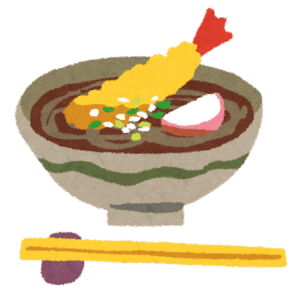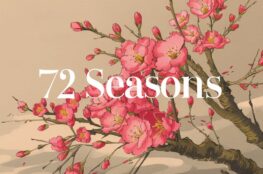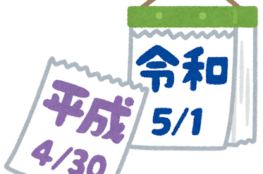In Japan, we have a lot of traditional celebrations, festivals, events and holidays throughout the year.
Here is the list of Japanese major celebrations and holidays with explanations.
Some traditions vary depending on the region in Japan, and additionally some are celebrated on a slightly different date based on the old lunar calendar.
List of Japanese Celebrations and Holidays
| Japanese | Reading | English | Date | National Holiday |
| 元日 | Ganjitsu | New Year’s Day | January 1 | X |
| お正月 | Oshōgatsu | New Year | January 1–3 | |
| 七草がゆ | Nanakusa Gayu | The Festival of Seven Herbs | January 7 | |
| 鏡開き | Kagami Biraki | Rice Cutting Ceremony | January 11 | |
| 成人の日 | Seijin no Hi | Coming of Age Day | The Second Monday of January | X |
| 節分 | Setsubun | The Bean Throwing Festival | Between February 2 and 4 | |
| 建国記念の日 | Kenkoku Kinen no Hi | National Foundation Day | February 11 | X |
| バレンタインデー | Barentaindē | Valentine’s Day | February 14 | |
| 天皇誕生日 | Tennō Tanjōbi | The Emperor’s Birthday | February 23 | X |
| ひな祭り | Hina Matsuri | Doll Festival / Girls’ Festival | March 3 | |
| ホワイトデー | Howaitodē | White Day | March 14 | |
| 春分の日 | Shunbun No Hi | Spring Equinox Day | March 20 or 21 | X |
| 春のお彼岸 | Haru no Ohigan | Spring Equinoctial Week | 3 days before and after the equinox day | |
| お花見 | Ohanami | Cherry Blossom Viewing | April | |
| 十三参り | Jūsanmairi | 13 Year Old Festival | April 13 | |
| 昭和の日 | Shōwa no Hi | Shōwa Day | April 29 | X |
| ゴールデンウィーク | Gōruden’u~īku | Golden Week | A week from 29 April to May 6 | |
| 憲法記念日 | Kenpō Kinen Bi | Constitution Memorial Day | May 3 | X |
| みどりの日 | Midori no Hi | Greenery Day | May 4 | X |
| こどもの日 | Kodomo no Hi | Children’s Day | May 5 | X |
| 母の日 | Haha no Hi | Mother’s Day | The Second Sunday of May | |
| 父の日 | Chichi no Hi | Father’s Day | The Third Sunday of June | |
| 夏至 | Geshi | Summer Solstice | June 21 or 22 | |
| 七夕 | Tanabata | Star Festival | July 7 | |
| 海の日 | Umi no Hi | Marine Day | The Third Monday of Jury | X |
| 土用の丑の日 | Doyō no Ushi no Hi | The Midsummer Day of the Ox | The End of July | |
| 立秋 | Risshū | Start of Autumn | Around August 7 | |
| 山の日 | Yama no Hi | Mountain Day | August 11 | X |
| お盆 | Obon | Bon Festival | August 13–16 | |
| お月見 | Otsukimi | Moon Viewing | The Night of a Full Moon of September | |
| 敬老の日 | Keiro no Hi | Respect for the Aged Day | The Third Monday of September | X |
| 秋分の日 | Shūbun no Hi | Autumnal Equinox Day | September equinox (Usually September 22 or 23) | X |
| 秋のお彼岸 | Aki no Ohigan | Autumn Equinoctial Week | 3 days before and after the equinox day | |
| 紅葉狩り | Momijigari | Autumn Leaves Hunting | October to November | |
| スポーツの日 | Supōtsu no Hi | Sports Day | The Second Monday of October | X |
| ハロウィン | Harō~in | Halloween | October 31 | |
| 文化の日 | Bunka no Hi | Culture Day | November 3 | X |
| 七五三 | Shichi-Go-San | 7-5-3 Festival | November 15 | |
| 勤労感謝の日 | Kinrō Kansha no Hi | Labor Thanksgiving Day | November 23 | X |
| 冬至 | Tōji | Winter Solstice | December 21 or 22 | |
| クリスマス | Kurisumasu | Christmas | December 25 | |
| 大晦日 | Ōmisoka | New Year’s Eve | December 31 | |
There are 16 national holidays a year in Japan as of 2022.
Most public organizations, banks and schools are closed on those holidays.
Also, if a national holiday falls on Sunday, the following Monday will be a substitute holiday.
Japanese Celebrations in January
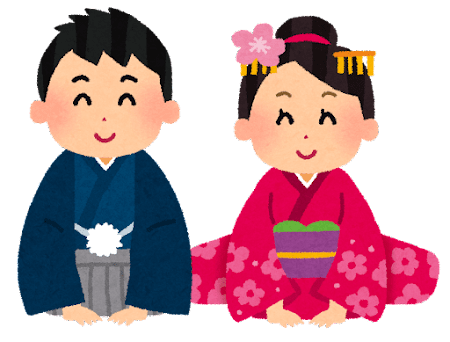
お正月 (Oshōgatsu) – New Year
Date: January 1–3
お正月 (Oshōgatsu) or 正月 (Shōgatsu) is one of the most important events in Japan.
All the family members and relatives gather and celebrate the new year together with a lot of good foods like お節料理 (Osechi Ryōri), お雑煮 (Ozōni ; soup with rice cakes), お屠蘇 (Otoso ; New Year’s Sake), and so on.
[Reference] Osechi Ryōri(おせち料理): What is the Meaning of Each Dish in Osechi?

七草がゆ (Nanakusa Gayu) – The Festival of Seven Herbs
Date: January 7
On January 7th, we eat 七草がゆ (Nanakusa Gayu ; rice gruel with seven herbs) wishing for a year without illness.
Seven herbs include セリ (Seri ; Japanese parsley), ナズナ (Suzuna ; Shepherd’s purse), ゴギョウ (Gogyō ; Jersey cudweed), ハコベラ (Hakobera ; Chickweed), ホトケノザ (Hotokenoza ; Henbit), スズナ (Suzuna ; turnip), スズシロ (Suzushiro ; Daikon radish).
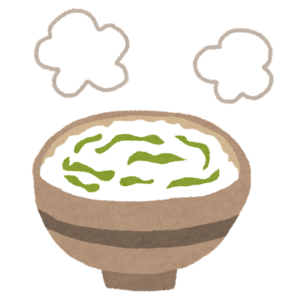
鏡開き (Kagami Biraki) – Rice Cutting Ceremony
Date: January 11
Traditionally we break 鏡餅 (Kagami Mochi ; New Year’s rice cake offered to the God) into pieces and cook お汁粉 (Oshiruko ; Sweet red-bean soup with mochi) with them to eat and get good luck from the God.
[Reference] Kagami biraki – Wikipedia
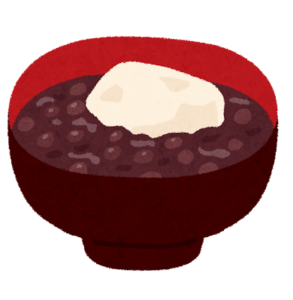
成人の日 (Seijin no Hi) – Coming of Age Day
Date: The Second Monday of January
It is a national holiday to celebrate all the people who have turned 20 years old as new 成人 (Seijin ; adults).
Japanese Celebrations in February

節分 (Setsubun) – The Bean Throwing Festival
Date: Between February 2 and 4
Usually around February 3rd, we do 豆まき (Mame Maki ; bean throwing) with saying 『鬼は外、福は内』(Oni ha soto, fuku ha uchi ; “Devils out! Happiness in!”).
And we eat 恵方巻 (Ehō Maki ; Sushi roll for Setsubun) while facing to the year’s “lucky direction” called 恵方 (Ehō ; direction where the year’s God is in).
[Reference] Setsubun – Wikipedia
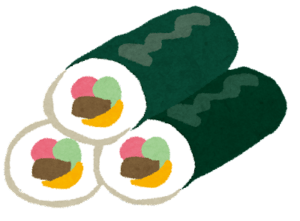
バレンタインデー – Valentine’s Day
Date: February 14
Although it is not a Japanese traditional event, this is rather an important day for young people these days. On this day, in Japan, girls give チョコレート (chocolates) to boys whom they like.
Japanese Celebrations in March
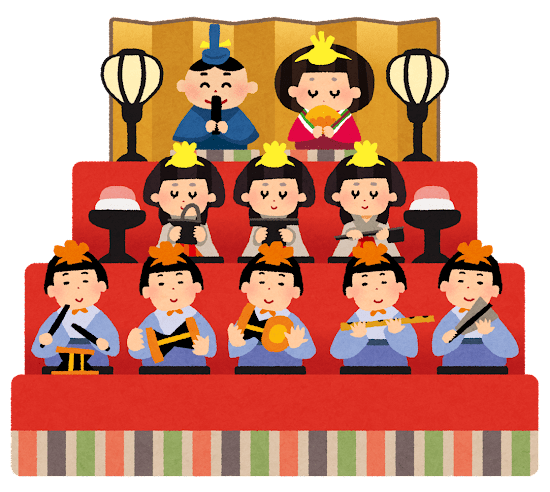
ひな祭り (Hina Matsuri) – Doll Festival / Girls’ Festival
Date: March 3
ひな祭り or 雛祭り (Hina Matsuri) is a celebration for girls.
In the families with girls, they display 雛人形 (Hina Ningyō ; dolls for Girls’ Festival) and often eat special food like ちらし寿司 (Chirashi Zushi ; a type of sushi with a variety of ingredients sprinkled on top), ひなあられ (Hina Arare ; rice crackers for Girls’ Festival), ひし餅 (Hishimochi ; three-tiered diamond-shaped rice cakes), wishing for the happiness and good health of girls.
[Reference] Hinamatsuri – Wikipedia
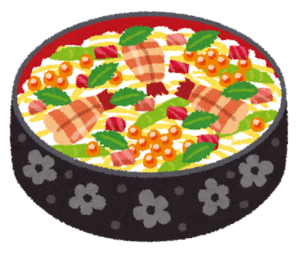
ホワイトデー – White Day
Date: March 14
This is a Japanese unique event corresponding to Valentine’s Day. On White Day, boys who got chocolates from girls on Valentine’s Day give small gifts to girls in return.
春のお彼岸 (Haru no Ohigan) – Spring Equinoctial Week
Date: 3 days before and after the equinox day
It is a Buddhism ceremony for the week of 春分の日 (Shunbun No Hi ; Spring Equinox Day).
People visit graves and pray for the souls of their ancestors by offering ぼたもち (Botamochi ; rice dumplings covered with sweet bean paste).
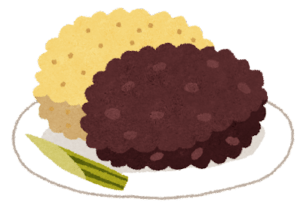
Japanese Celebrations in April
お花見 (Ohanami) – Cherry Blossom Viewing
Date: Early April
When cherry blossoms start blooming, a lot of Japanese go for お花見 (Ohanami) or 花見 (Hanami) and have a picnic or a party under cherry blossom trees to enjoy beautiful cherry blossoms.
It is one of the most traditional customs in Japan.
[Reference] Hanami – Wikipedia

十三参り (Jūsanmairi) – 13 Year Old Festival
Date: April 13
Even though it is not as famous as 七五三 (Shichi-Go-San ; “7-5-3” Festival), 十三参り or 十三詣り (Jūsanmairi) is a traditional ceremony to celebrate children who have turned 13 years old.
We visit shrines or temples and pray for the good fortune and wisdom of children.
Japanese Celebrations in May
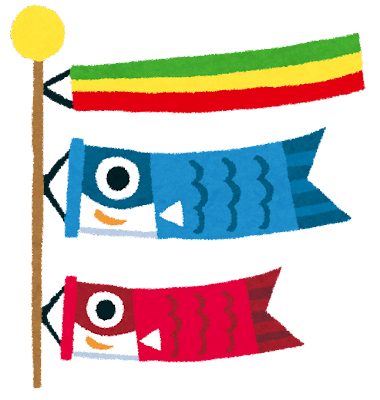
ゴールデンウィーク – Golden Week
Date: A week from 29 April to May 6
Longest weekend of the year from the end of April to the beginning of May is called ゴールデンウィーク (Golden Week).
A lot of people go on a trip and famous tourist spots get all extremely crowded.
こどもの日 (Kodomo no Hi) – Children’s Day / Boys’ Festival
Date: May 5
こどもの日 or 子供の日 (Kodomo no Hi) is a national holiday to celebrate the healthy growth of children.
In the families with boys, people display 鯉のぼり (Koi Nobori ; carp-shaped streamers) and/or 五月人形 (Gogatsu Ningyō ; dolls for Boys’ Festival) including 兜 (Kabuto ; Samurai warrior helmet) or 鎧 (Yoroi : Samurai Armor).
On this day, we have a custom to eat 柏餅 (Kashiwa Mochi ; rice cake with red bean paste wrapped in oak leaves) or ちまき (Chimaki ; sweet rice dumplings wrapped in bamboo leaves).
[Reference] Children’s Day – Wikipedia
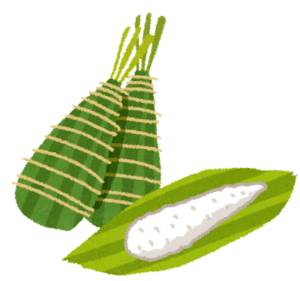
母の日 (Haha no Hi) – Mother’s Day
Date: The Second Sunday of May
In Japan, we traditionally give カーネーション (carnations) to mothers with our gratitude on this day.

Japanese Celebrations in June
父の日 (Chichi no Hi) – Father’s Day
Date: The Third Sunday of June
On Father’s Day, we give small gifts to fathers as a token of our appreciation.

Japanese Celebrations in July
七夕 (Tanabata) – Star Festival
Date: July 7
It is said that 織姫 (Orihime ; the star Vega) and 彦星 (Hikoboshi ; the star Altair) can meat only on this day per year over 天の川 (Ama no Gawa ; the Milky Way).
We write our wishes on 短冊 (Tanzaku ; strips of papers) and hang them from bamboo branches.
[Reference] Tanabata – Wikipedia
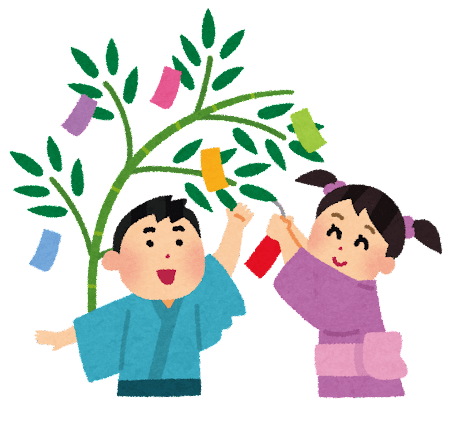
土用の丑の日 (Doyō no Ushi no Hi) – The Midsummer Day of the Ox
Date: The End of July
土用 (Doyō) means a special day between seasons, and 夏の土用 (Natsu no Doyō ; Doyō in the summer) is usually around the hottest day.
丑の日 (Ushi no Hi) is the day of the ox, named after one of 十二支 (Jūnishi ; the twelve animals of the Chinese zodiac).
On this day, we have a custom to eat うなぎ (Unagi ; eel) since the Edo period (1603-1867) to prevent summer fatigue.
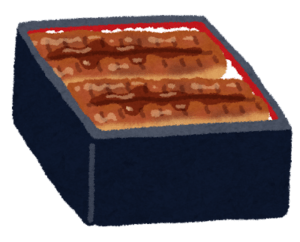
Japanese Celebrations in August
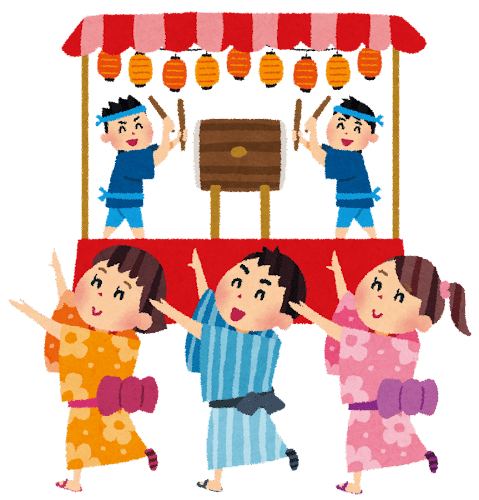
お盆 (Obon) – Bon Festival
Date: August 13–16
お盆 (Obon) or 盆 (Bon) is a Buddhist event to worship the spirits of our ancestors.
We invite the spirits by 迎え火 (Mukaebi ; welcoming fire), and see them off with 送り火 (Okuribi ; ceremonial fire).
During the Bon Festival, a lot of people visit graves to welcome the spirits of the ancestors. We have various customs depending on the area like offering 精霊馬 (Shōryōma); a horse made from cucumber and a cow made from eggplant.
[Reference] Bon Festival – Wikipedia
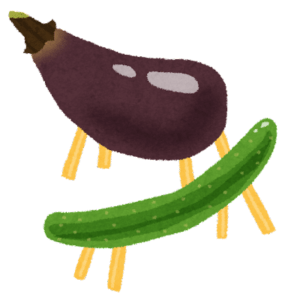
Japanese Celebrations in September
お月見 (Otsukimi) – Moon Viewing
Date: The Night of a Full Moon of September
It is a festival held at 十五夜 (Jūgoya ; the harvest moon night) originally to celebrate the harvest of the year by watching the full moon.
We often eat 月見団子 (Tsukimi dango ; Mochi balls for moon viewing) while enjoying the moon viewing.
[Reference] Tsukimi – Wikipedia
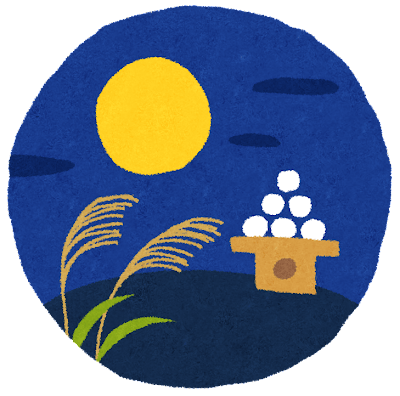
秋のお彼岸 (Aki no Ohigan) – Autumn Equinoctial Week
Date: 3 days before and after the equinox day
It is the Autumn version of お彼岸 (Ohigan ; Equinoctial Week), a Buddhism ceremony for the week of 秋分の日 (Shūbun No Hi ; Autumn Equinox Day) just like 春のお彼岸 (Haru no Ohigan ; Spring Equinoctial Week).
People visit graves and pray for the souls of their ancestors. The same rice dumplings covered with sweet bean paste for 春のお彼岸 (Haru no Ohigan) are called differently; おはぎ (Ohagi) in the Autumn.
Japanese Celebrations in October
紅葉狩り (Momijigari) – Autumn Leaves Hunting
Date: October to November
紅葉狩り (Momijigari ; Autumn Leaves Hunting) in Autumn is as famous as お花見 (Ohanami ; Cherry Blossom Viewing) in Spring.
We visit mountains or nature and enjoy the colors of 紅葉 (Kōyō ; Autumn leaves).
Famous viewing spots often get very crowded by not only Japanese but also many foreign tourists during the season.
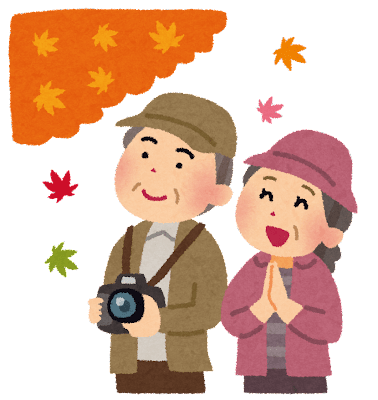
ハロウィン – Halloween
Date: October 31
It is not a Japanese traditional event, however, young people tend to adopt some customs like wearing costumes and throwing parties these days.
Japanese Celebrations in November

七五三 (Shichi-Go-San) – “7-5-3” Festival
Date: November 15
As the name 七五三 (Shichi-Go-San ; Seven-Five-Three) describes it, it is a ceremony for 3 and 7 year old girls and 5 year old boys in Kimono go to the shrines to pray for their healthy growth.
The festival usually is held on November 15th, but we can also have a ceremony on weekends or holidays in November as it suits families’ needs.
Children often get to eat 千歳飴 (Chitose Ame ; long stick candies) which symbolize longevity.
[Reference] Shichi-Go-San – Wikipedia
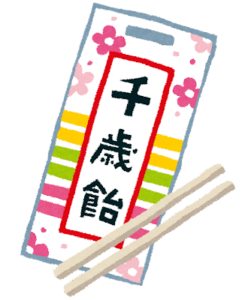
Japanese Celebrations in December
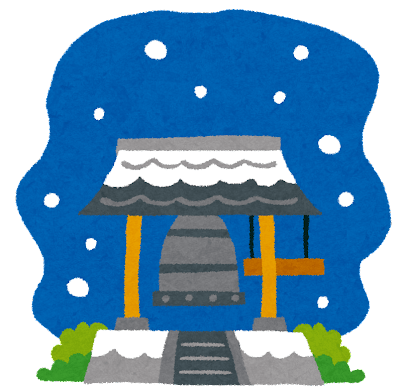
冬至 (Tōji) – Winter Solstice
Date: December 21 or 22
冬至 (Tōji) is the shortest day of the year.
On this day, traditionally we take ゆず湯 (Yuzuyu ; a bath with Yuzu) to pray for a disease-free life.
It is also said that eating food whose name ending with “ん” like なんきん* (Nankin ; pumpkin), にんじん (Ninjin ; Carrot), れんこん (Renkon ; Lotus root), ぎんなん (Ginnan ; Ginkgo nuts), きんかん (Kinkan ; Kumquat), かんてん (Kanten ; Agar), or うどん (Udon) brings you “運” (Un ; fortune).
* なんきん (Nankin) is more commonly known as かぼちゃ (Kabocha).
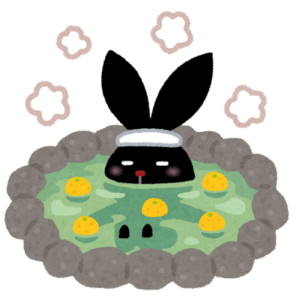
クリスマス – Christmas
Date: December 25
Even though it is not a national holiday in Japan, a lot of people celebrate Christmas on their own way like decorating Christmas trees, having a party, eating festivity foods, exchanging gifts, and so on.
大晦日 (Ōmisoka) – New Year’s Eve
Date: December 31
大晦日 (Ōmisoka) means the last day of the year. On that day, families get together and enjoy each family’s traditional meals like 鍋 (Nabe ; hotpot), すき焼き (Sukiyaki), 寿司 (Sushi), etc.
The most famous food for New Year’s Eve in Japan is 年越しそば (Toshikoshi soba ; soba noodles eaten at night on New Year’s Eve), and we wish for our long healthy life by eating those long-shaped noodles.
[Reference] Ōmisoka – Wikipedia
